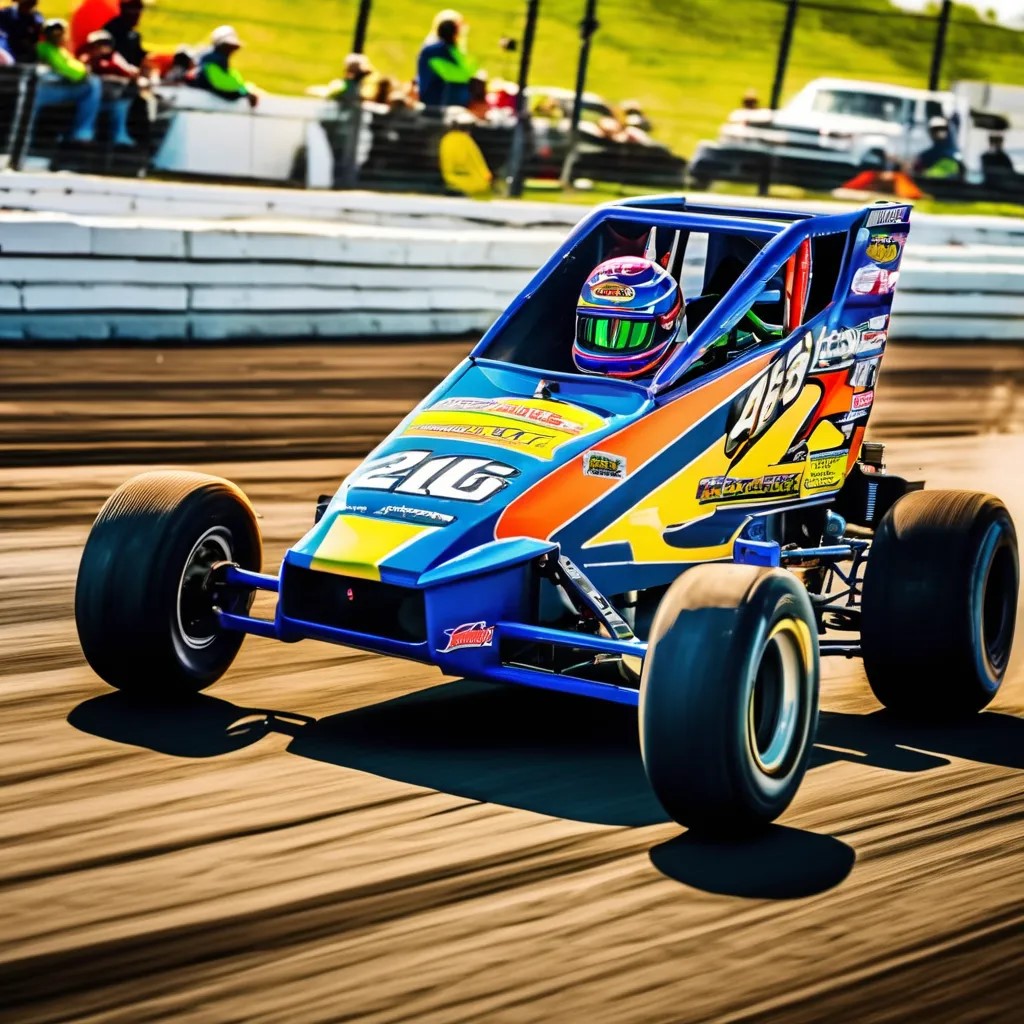
The Thrilling World of Midget Car Racing
Midget Car Racing is an exhilarating motorsport that has captured the hearts of fans worldwide. Known for its high-octane action and compact yet powerful vehicles, the sport continues to grow in popularity. Enthusiasts from all walks of life, from young beginners to seasoned professionals, are drawn to its fast-paced and thrilling nature. To truly appreciate Midget Car Racing, it’s essential to delve into its origins, global reach, amateur participation, professional leagues, and its broader cultural significance.
The Origin and History
The origins of Midget Car Racing date back to the early 1930s in the United States. During the Great Depression, there was a demand for affordable entertainment, and it fit the bill perfectly. The sport’s early pioneers designed small, lightweight cars powered by motorcycle or small automobile engines. These vehicles raced on dirt tracks, providing fans with accessible and exciting entertainment.
The first organized races were held in Southern California, with famous tracks like Gilmore Stadium in Los Angeles becoming hotspots for the new sport. By the mid-1930s, it had gained national prominence, with tracks and events springing up across the country. Innovations in car design and track preparation helped refine the sport, increasing its competitiveness and appeal.
The post-World War II era marked a significant expansion. Returning soldiers sought thrills and camaraderie, and Midget Car Racing provided both. The sport also expanded internationally during this period. Countries like Australia, New Zealand, and South Africa embraced the sport, adapting it to their unique racing cultures. By the 1950s, Midget Car Racing had firmly established itself as a global phenomenon.
The Popularity of Midget Car Racing Worldwide
Today, it is celebrated globally. Its roots in the United States remain strong, with countless fans attending races and watching broadcasts. Iconic tracks like the Chili Bowl in Tulsa, Oklahoma, host annual events that draw thousands of spectators and top-tier drivers.
In Australia and New Zealand, it thrives under the name “Speedway Midget Racing.” These countries have a rich motorsport tradition, and the smaller cars’ intense action fits perfectly into their racing culture. Events like the Australian Speedcar Championship and the New Zealand Midget Car Grand Prix attract competitors from across the globe.
Japan and Europe have also embraced the sport, albeit in slightly modified formats. In Japan, the sport is part of the vibrant motorsport landscape, often sharing the spotlight with other racing disciplines. In Europe, particularly in countries like the United Kingdom and Germany, Midget Car Racing complements the region’s love for grassroots motorsports.
Amateur Midget Car Racing Globally
Amateur Midget Car Racing provides an entry point for aspiring drivers and enthusiasts. Youth leagues and school-based programs play a pivotal role in nurturing talent. These leagues often utilize scaled-down cars with less powerful engines, ensuring safety while maintaining the sport’s excitement.
In the United States, youth leagues like the Quarter Midget Association focus on children aged 5 to 16. These programs teach foundational driving skills, sportsmanship, and mechanical knowledge. Many professional drivers credit these leagues for their early development.
Similarly, Australia and New Zealand have robust amateur programs. Junior categories allow young drivers to gain experience on real tracks under controlled conditions. Clubs and local organizations often organize these events, fostering a sense of community and mentorship.
In Europe, amateur leagues are often tied to local motorsport clubs. These clubs provide training, access to equipment, and opportunities to compete in regional events. Japan’s amateur scene, while smaller, emphasizes precision and technical skill, reflecting the country’s broader motorsport culture.
Professional Leagues in Midget Car Racing
Professional Midget Car Racing is the pinnacle of the sport, showcasing incredible skill and cutting-edge technology. Numerous leagues worldwide cater to elite drivers and teams, each with its unique characteristics.
In the United States, the United States Auto Club (USAC) governs many of the top Midget Car Racing events. The USAC National Midget Championship is one of the sport’s premier series, attracting the best drivers from around the globe. The Chili Bowl Nationals, held annually, is another standout event. It’s often referred to as the “Super Bowl of Midget Racing.”
Australia’s Speedcar Association of Australia oversees the country’s professional leagues. The Australian Speedcar Championship is the flagship event, boasting a history dating back to the 1930s. New Zealand’s Speedway New Zealand organizes similar high-profile events, such as the International Midget Series, which features drivers from multiple countries.
In Japan, professional leagues are part of broader motorsport events, often incorporating elements from other racing disciplines. European professional leagues, though smaller, are growing steadily. Events like the British Midget Car Series and German open-wheel championships highlight the sport’s appeal across diverse audiences.
The Political and Social Significance
It has transcended its status as a mere sport, influencing both politics and society. In its early years, the sport brought communities together during challenging economic times. Its affordability allowed people from various backgrounds to participate and spectate, fostering unity and shared excitement.
Politically, the sport has sometimes been a platform for local governments to promote infrastructure development. Building tracks and hosting events stimulate local economies, creating jobs and attracting tourism. In countries like Australia and New Zealand, Midget Car Racing events are often linked to regional pride, reinforcing cultural identity.
Socially, the sport serves as a bridge between generations. Many families pass down a passion for Midget Car Racing, with grandparents, parents, and children attending races together. This intergenerational connection strengthens community bonds and keeps the sport’s traditions alive.
Furthermore, the sport’s inclusivity is noteworthy. Women and minorities have made significant strides in the sport, challenging stereotypes and inspiring others to participate. Programs aimed at increasing diversity continue to shape the future of Midget Car Racing.
Rules of Midget Car Racing
Understanding the rules of Midget Car Racing is essential to appreciating the sport fully. While specific regulations vary by league and country, some fundamental principles remain consistent.
Each race typically involves a set number of laps, ranging from 20 to 50, depending on the track size and event. Cars must adhere to strict specifications regarding weight, engine size, and safety features. These regulations ensure a level playing field and prioritize driver safety.
Qualifying rounds determine the starting positions for main events. Drivers aim to set the fastest lap times to secure advantageous positions. During the race, overtaking, strategic positioning, and split-second decision-making are crucial.
Safety is paramount in Midget Car Racing. Drivers must wear protective gear, including helmets, fire-resistant suits, and harnesses. Cars are equipped with roll cages, fuel cells, and other safety features to minimize risks.
Penalties are enforced for rule violations, such as reckless driving or unsportsmanlike conduct. Depending on the severity, penalties may range from time deductions to disqualification. Officials monitor races closely to ensure compliance and fairness.
Conclusion
Midget Car Racing is a dynamic sport with a rich history, global appeal, and profound cultural significance. Its roots in 1930s America have grown into a worldwide phenomenon, captivating fans across continents. From amateur leagues nurturing young talent to professional championships showcasing elite skills, the sport offers something for everyone.
Beyond the track, it unites communities, promotes inclusivity, and contributes to local economies. Its fast-paced action and thrilling competition continue to inspire new generations of fans and participants. Whether you’re a lifelong enthusiast or a curious newcomer, there’s no denying the enduring allure of Midget Car Racing.





